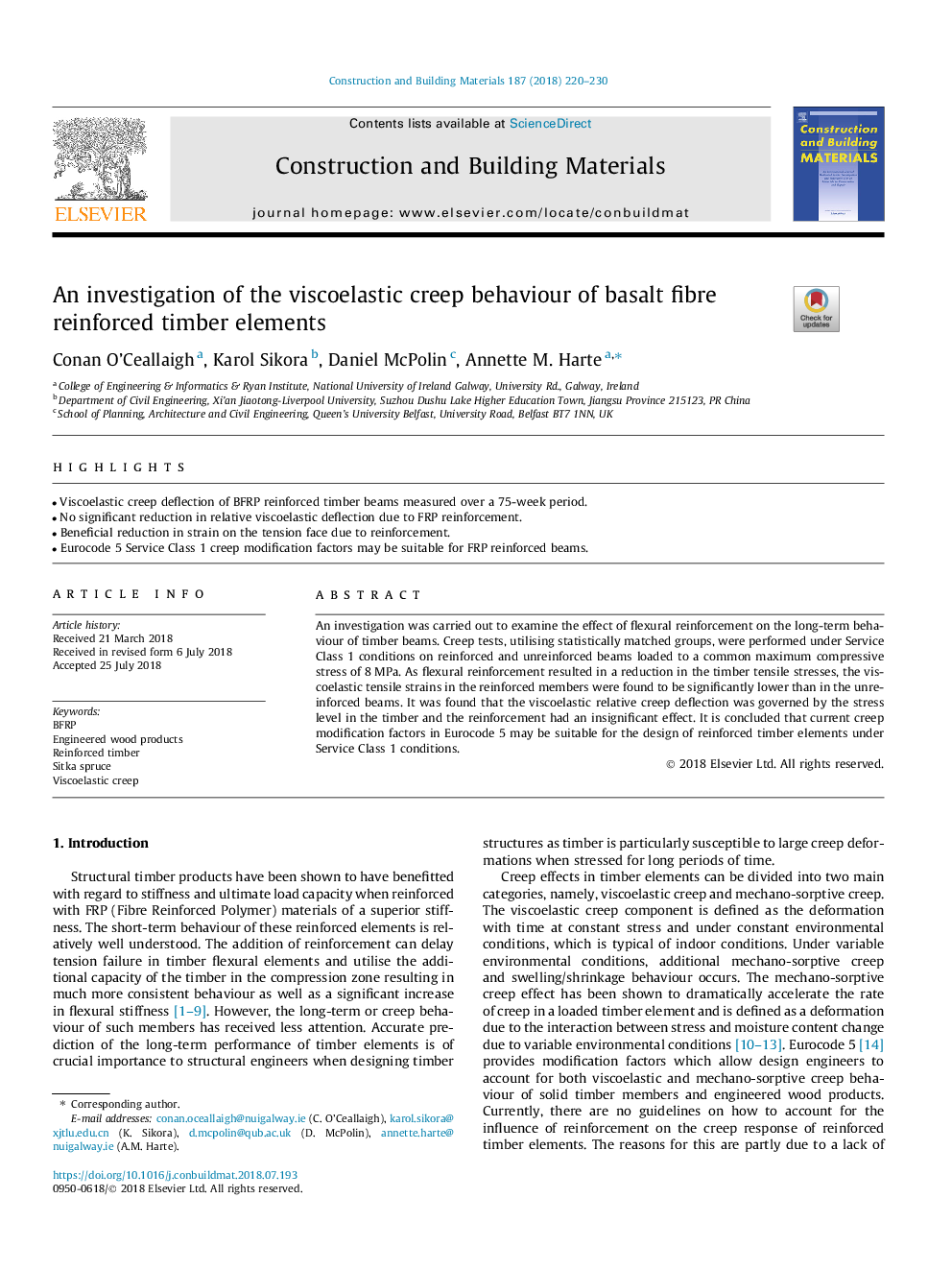| Article ID | Journal | Published Year | Pages | File Type |
|---|---|---|---|---|
| 6711295 | Construction and Building Materials | 2018 | 11 Pages |
Abstract
An investigation was carried out to examine the effect of flexural reinforcement on the long-term behaviour of timber beams. Creep tests, utilising statistically matched groups, were performed under Service Class 1 conditions on reinforced and unreinforced beams loaded to a common maximum compressive stress of 8â¯MPa. As flexural reinforcement resulted in a reduction in the timber tensile stresses, the viscoelastic tensile strains in the reinforced members were found to be significantly lower than in the unreinforced beams. It was found that the viscoelastic relative creep deflection was governed by the stress level in the timber and the reinforcement had an insignificant effect. It is concluded that current creep modification factors in Eurocode 5 may be suitable for the design of reinforced timber elements under Service Class 1 conditions.
Related Topics
Physical Sciences and Engineering
Engineering
Civil and Structural Engineering
Authors
Conan O'Ceallaigh, Karol Sikora, Daniel McPolin, Annette M. Harte,
